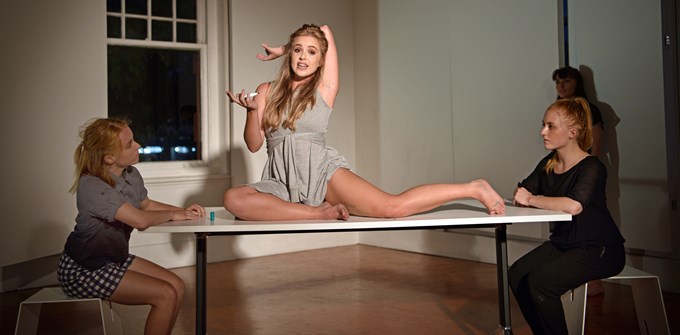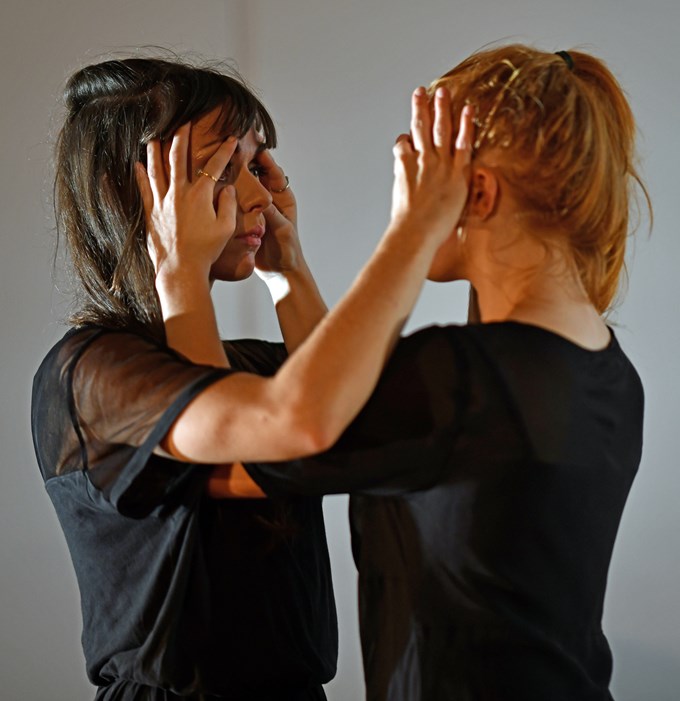Studio One Toi Tū’s sought-after studio residencies offer invaluable support for established and emerging artists based in Auckland.
The five recipients of the 2017/2018 Creative Studio Residency received ten months of studio space from November 2017 to August 2018, including 24-hour access to the Studio One Toi Tū precinct to help achieve their project goals.
We chat with one of the 2017/2018 residents, dance artists Dance Plant Collective, on how they’ve found the residency so far and what’s in store for their residency showcase that will be held in August.
Tell us about Dance Plant Collective and how the group was born.
We are a group of six Auckland-based female dance artists with a vision to create politically challenging, transformative performances based on themes of interconnection, collaboration and nurturing the community.
After we graduated in contemporary dance from Unitec Institute of Technology we formed Dance Plant Collective and developed our first full-length work Desire Line(s) (2017).
Dance Plant Collective are the first performance artists to be awarded the Studio One Toi Tū residency. What attracted you to apply for the residency and how has it benefited your artistic practice so far?
The residency is the perfect environment and opportunity for us. It offers a central art space in our own city, not specifically designed for dance but for a wider range of visual arts and artists; an open, inspiring, and non-intimidating space full of potential to take risks.
Studio One Toi Tū and Auckland Council have been nothing but supportive and helpful during the residency, contributing their knowledge, advice and expertise. We really feel like we have a support system here, a base to grow our collective, our work, and to engage, involve and nurture the community.
Congratulations on your recent win of the 'Best Newcomer (Company) Award' from the Auckland Fringe for The Cost of Arms & Legs. How did it feel to be recognised with this award?
Thank you! We found out about the award just before our closing night show, which was a super way to finish off the season. We just feel lucky to be recognised for our work.
As a reasonably new collective, everything we do feels like another step in our journey and another learning experience. All the hours, the doubts and the sore muscles are because we love doing this - being recognised with an award like this is incredibly humbling and gives us encouragement to keep making work and taking risks.

How do you think audiences tend to engage with performance compared with other art forms/genres?
Sometimes in dance, the ‘fourth wall’ between the performer and audience is louder and more obvious than in other art forms. This poses an enjoyable but challenging task; to create a welcoming and safe space for the audience, find ways to intimately engage them with the work and challenge their perspective on traditional performance roles.
Unlike a painting or a film, performance exists only in the present moment and even the same show will never be exactly the same each time. I think this is why people love going to the theatre: they want to have an experience, to feel something, and to connect in some way. Being alive and present with each other in a space enables us to do this.
We’re looking forward to checking out the creative outputs from your residency at the residents’ showcase in August – tell us about the performance you’re working on for this?
Our three main works during the residency are The Cost of Arms & Legs, a revisit of Desire Line(s) and a new piece entitled MEAT. Images and videos of these performances will be showcased in the residents’ exhibition to share insights into our creative processes and how our work comes together.
To place our live art form into a typically passive, visual-art environment and exhibition time period is a great challenge that we are looking forward to!


